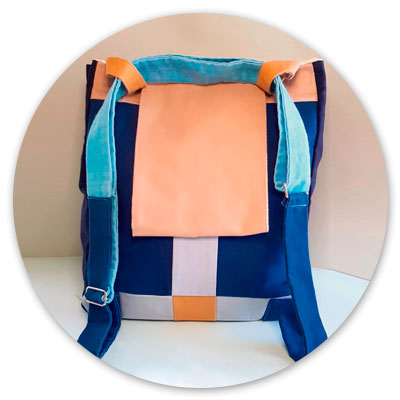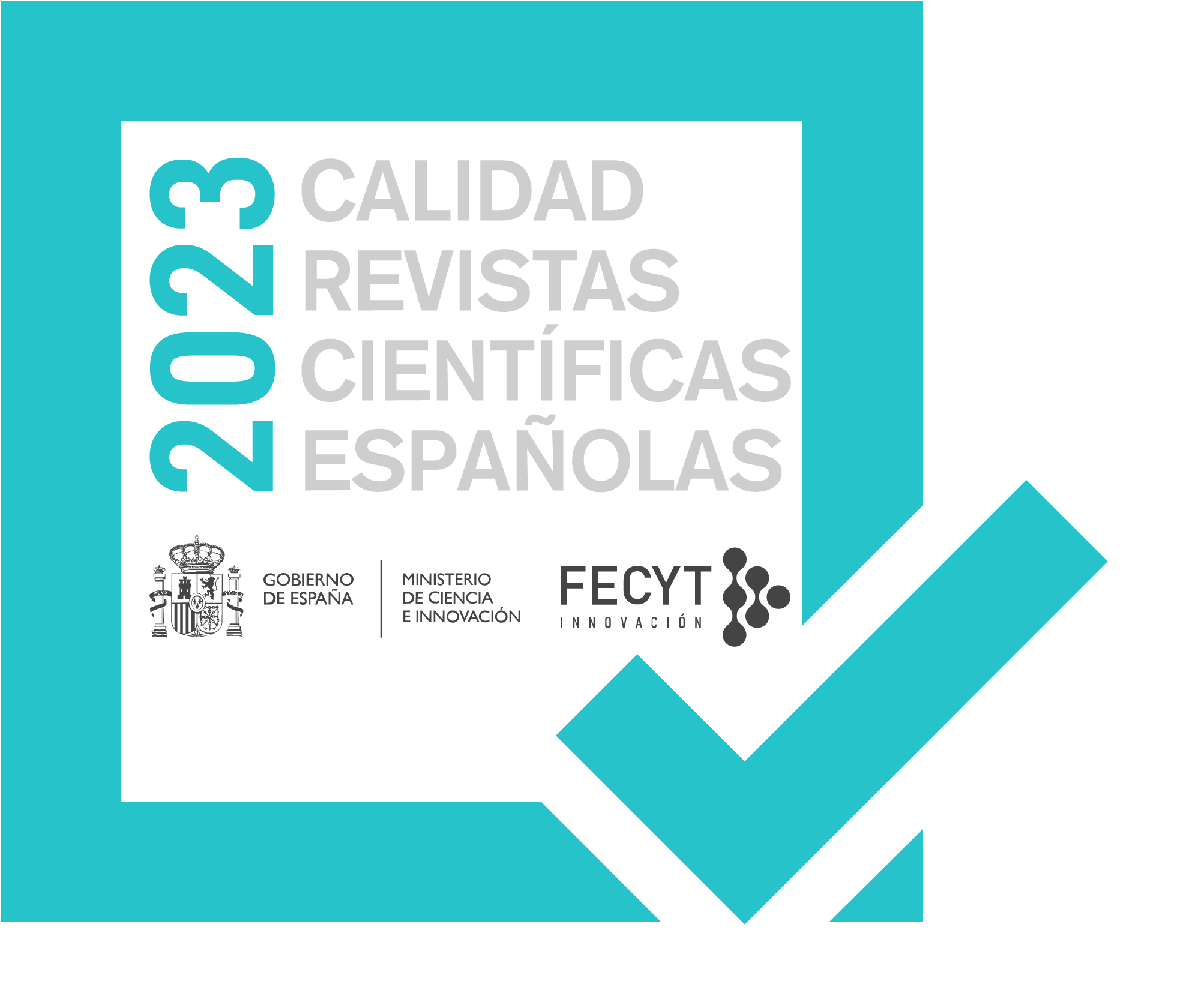El prototipo en la investigación a través del diseño
Una mirada desde el upcyling
DOI:
https://doi.org/10.24310/Idiseno.2021.v16i.11316Palabras clave:
Upcycling, Investigación a través del diseño, prototipo, diseño.Resumen
Las actividades de investigación son un punto de partida importante en la evolución del diseño hacia una disciplina con base académica; se espera que produzca conocimiento útil en línea con la relevancia que ha adquirido la investigación a través del diseño (RtD) como generador de conocimiento, orientado a la práctica y aplicación del mismo, para la sociedad y ciencia. El Upcycling es una de las técnicas medioambientales sostenibles poco estudiadas pero prometedoras, que tiene potencial para contribuir a la reducción de residuos. [Autores] del artículo abogan por su aplicación para expandir el ciclo de vida de los productos, y ofrecer nuevos conocimientos para comprender los desafíos de desarrollar prototipos circulares dentro de un modelo lineal de producción de moda.
Descargas
Métricas
Publicación Facts
Perfil de revisores N/D
Información adicional autores
Indexado: {$indexList}
-
Indexado en
- Sociedad Académica/Grupo
- N/D
- Editora:
- Universidad de Málaga
Citas
Ali, N.S., Khairuddin, N.F. & Abidin, S.Z. (Septiembre, 2013). “Upcycling: Re-use and recreate functional interior space using waste materials”. Trabajo presentado en International Conference on Engineering and Product Design Education de Dublin Institute of Technology, Dublin, Ireland.
Archer, B. (1981). “A View of the Nature of the Design Research”. En R. Jacques, & J. A. Powell (Ed.), Design:Science:Method. Guilford, Surrey: IPC Bussiness Press Ltd. (pp. 30-47). Recuperado de https://catedrammo.files.wordpress.com/2010/01/archer_bruce_1981_design_science_method.pdf
Archer B (1995). “The Nature of Research”. Co-Design, 2(6), [6-13]. Recuperado de: https://archive.org/details/TheNatureOfResearch/mode/2up
Bang, A.L., Krogh., P., Ludwigsen, M. & Markussen, T. (2012). “The role of hypothesis in constructive design research”. Trabajo presentado en The Art of Research IV: Making, Reflecting and Understanding de Aalto University, Helsinki, Finland.
Bayazit, N. (2004). “Investigating Design: A Review of Forty Years of Design Research”. Design Issues, 20(1), [16-29]. https://doi.org/https://doi.org/10.1162/074793604772933739 https://www.ida.liu.se/~steho87/desres/bayazit.pdf
Bhatt, D., Silverman J. & Dickson M.A. (2018). “Consumer interest in upcycling techniques and purchasing upcycled clothing as an approach to reducing textile waste”, International Journal of Fashion Design, Technology and Education. doi:10.1080/17543266.2018.1534001.
Bonsiepe G. (2007). “The Uneasy Relationship between Design and Design Research”. En Michel R. (Ed.) Design Research Now. Birkhäuser Basel: Board of International Research in Design. (pp. 21- 40) https://doi.org/10.1007/978-3-7643-8472-2_2
Bridgens, B., et al. (2018). “Creative upcycling: reconnecting people, materials and place through making”. Journal of Cleaner Production, 189, [145-154].
Buchanan, R., (1992). “Wicked Problems in Design Thinking”. Design Issues, 8 (2), [5–21]. Recuperado de https://web.mit.edu/jrankin/www/engin_as_lib_art/Design_thinking.pdf
Bucheneau, M., & Fulton Suri, J. (Agosto, 2000). “Experience prototyping”. Trabajo presentado en Proceedings of the Conference on Designing Interactive Systems de ACM, New York, NY.
Cao, H., & Folan, P. (2012). “Product life cycle: the evolution of a paradigm and literature review from 1950-2009”. Production Planning & Control, 23(8), [641-662].
Carrillo, J. (Junio, 2019). “Promoción de la economía circular en el sector moda y textil en México”. CEDMA. Recuperado de https://www.cemda.org.mx/wp-content/uploads/2019/08/CEM_moda_publicaci%C3%B3n.pdf
Chapman, J. (2009). “Design for (Emotional) Durability”. Design Issues, 25, [29-35] DOI:10.1162/desi.2009.25.4.29
Chun, N., Gurova, O., & Niinima?ki, K. (2017). “Rethinking the Roles of Fashion Designers. The Case of Pre Helsinki”. The Design Journal, 20(sup1), S4477-S4486, DOI: 10.1080/14606925.2017.1352944
Cross, N. (2001). “Designerly ways of knowing: Design discipline versus design science”. Design Studies, 17(3), [49-55]. http://users.metu.edu.tr/baykan/arch467/Readings/Cross01.pdf
Cross N. (2007). “From a Design Science to a Design Discipline: Understanding Designerly Ways of Knowing and Thinking”. En Michel R. (Ed), Design Research Now. Birkhäuser Basel: Board of International Research in Design. https://doi.org/10.1007/978-3-7643-8472-2_3
Cross, N. (1993). “Science and design methodology: A review”. Research in engineering design. 5(2), [63–69]. doi:10.1007/bf02032575
Cumming, D. (2017): “A Case Study Engaging Design for Textile Upcycling”. Journal of Textile Design Research and Practice. doi: 10.1080/20511787.2016.1272797
Dalsgaard, P. (Enero 2010). “Research in and through design: an interaction design research approach”. Trabajo presentado en the 22nd Australasian Computer-Human Interaction Conference de OZCHI, Brisbane, Australia.
Durrani, M., Ravnløkke L. & Niinima?ki K. (Noviembre, 2016). “Shared Emotional Values in Sustainable Clothing Design Approaches”. Trabajo presentado en Circular Transitions de Chelsea College of Arts & Tate, Britain, London.
Durrant, A. C., Vines, J., Wallace, J. & Yee., J.S.R. (2017). “Research Through Design: Twenty-First Century Makers and Materialities”. Design issues. 33 (3), [3-10]. Recuperado de https://www.mitpressjournals.org/doi/pdf/10.1162/DESI_a_00447
Fashion Revolution CIC (2020). “Fashion transparency index México 2020”. Recuperado de http://www.arlenica.org/indice_moda_MX20/
Findeli, A., Brouillet, D., Martin, S., Moineau, C. & Tarrago, R. (Mayo, 2008). “Research Through Design and Transdisciplinarity: A Tentative Contribution to the Methodology of Design Research”. En Focused - Current Design Research Projects and Methods de Swiss Design Network Symposium. Berne, Switzerland.
Fletcher, K. (2013) “Design for Sustainability in Fashion and Textiles”. En Black, S. (Ed.), The Handbook of Fashion Studies. London: Bloomsbury. (pp. 557-574).
Fletcher, K. 2014. Sustainable Fashion and Textiles. London and New York: Routledge.
Frayling, C. (1993). “Research in art and design”. Royal College of Art Research Papers, 1(1). London: Royal College of Art.
Frens J (2006). Designing for Rich Interaction: Integrating Form, Interaction and Function. (Tesis doctoral). Eindhoven University of Technology, Países bajos.
Giaccardi, E. (2019). “Histories and futures of research through design: From prototypes to connected things”. International Journal of Design, 13(3), [139-155]. Recuperado de http://www.ijdesign.org/index.php/IJDesign/article/view/3192/875
Han, S., Tyler, D., & Apeagyei, P. (Junio 2015). “Upcycling as a design strategy for product lifetime optimisation and societal change”. Trabajo presentado en Product Lifetimes And The Environment (PLATE) de Nottingham Trent University, UK.
Hirscher, A.L. & Fuad-luke A. (2013). Sustainable fashion: new approaches. Helsinki:Aalto ARTS Books.
Hirscher, A., Mazzarella F. & Fuad-Luke A. (2019). “Socializing Value Creation Through Practices of Making Clothing Differently: A Case Study of a Makershop With Diverse Locals”. Fashion Practice, 11(1), [53-80]. DOI: 10.1080/17569370.2019.1565377
Hundal, M., (Noviembre 2000). “A course in design for the environment”. Trabajo presentado en International Workshop EED – Education for Engineering Design, de State Scientific Library, Pilsen, República Checa.
Jonas W. (2007). “Design Research and its Meaning to the Methodological Development of the Discipline”. En Michel R. (Ed), Design Research Now. Birkhäuser Basel: Board of International Research in Design. https://doi.org/10.1007/978-3-7643-8472-2_11
Kurvinen, E., Koskinen, I. & Battarbee, K. (2008). “Prototyping social interaction”. Design Issues, 24(3), [46-57]. Recuperado de http://www.jstor.org/stable/25224182
Lim, Y.K., Stolterman E. & Tenerberg J. (Julio 2008). “The Anatomy of prototypes: Prototypes as filters, prototypes as manifestations of design ideas”. ACM Transactions on Computer-Human Interaction, 15(2). Doi: 10.1145/1375761.1375762.
Mahler, D. & Aurik. J. C. (2010). “Sustainability- A Product Life-Cycle Approach”. Recuperado de https://www.co.kearney.com/documents/20152/434399/Sustainability-A_Product_Life-Cycle_Approach.pdf/af682b8f-e42e-120b-f757-c0b1b9b4d9e8
Marchand, A. & Walker, S. (Octubre, 2007). “Connecting through Time:Old Objects, New Contexts, and Design-Centered Research for Sustainability.” Trabajo presentado en Connecting ’07 IDSA Education Symposium de ICSID/IDSA World Design Congress, San Francisco.
Margolin V. (1991). The Need for Design Studies. Design at the Crossroads: A Conference Report, CIRA Working papers Series 3.
McDonough, W. & Braungart, M. (2002). Cradle to cradle. New York: North Point Press.
McKelvey, K. & J. Munlsow. (2012). Fashion Design Process, Innovation & Practice. 2 Ed. Chichester, UK: Wiley.
Meroni, A., & Sangiorgi, D. (2011). Design for services. Gower Publishing, Ltd.
Mikkonen, J. (2016). Prototyping Interactions. (Tesis doctoral). Tampere University of Technology, Finlandia.
Mugge, R., Schoormans, J.P.l. & Schifferstein, h.n.J. (2005). “Design Strategies to Postpone consumers’ Product Replacement: The Value of a Strong Person-product Relationship”. Design Journal. 8(2), [38–48.] doi: 10.2752/146069205789331637
Niinima?ki, K. (2011). From disposable to sustainable: the complex interplay between design and consumption of textiles and clothing. (Tesis doctoral). Aalto University, Helsinki.
Niinimäki, K. (Ed.). (2013). Sustainable Fashion: New Approaches. Recuperado de: https://aaltodoc.aalto.fi/handle/123456789/13769
Odom, W., Wakkary, R., Lim, Y., Desjardins, A., Hengeveld, B & Banks, R. (2016). “From Research prototype to Research Product”. Trabajo presentado en CHI'16: CHI Conference on Human Factors in Computing Systems de ACM, San Jose California.
Pilz, R. (11 de Octubre de 1994). “Reiner Pilz: thinking about a green future”, Salvo Monthly, Recuperado de http://www.nrutech.com/wp-content/uploads/2014/09/1994_Salvo_Reiner_Pilz_Upcycling.pdf
Ræbild, U. (2016). Uncovering fashion design method practice: The influence of body, time and collection. (Tesis doctoral) Kolding: Design School Kolding.
Richardson, M. (Julio 2011). “Design for reuse: Integrating upcycling into industrial design practice”. Trabajo presentado en International Conference on Remanufacturing - ICoR de University of Strathclyde, Glasgow, UK.
Sarli C. (2017). “El problema de diseñar en la complejidad: las metodologías y sus aportes teóricos”. Recuperado de https://maestriadicom.org/articulos/el-problema-de-disenar-en-la-complejidad-las-metodologias-y-sus-aportes-teoricos/
Schifferstein, h.n.J. & Zwartkruis-Pelgrim, e.P.h. (2008). “Consumer-product Attachment: Measurement and Design Implications”. International Journal of Design. 2(3), [1–13.]. Recuperado de http://www.ijdesign.org/index.php/IJDesign/article/view/325/218
Schön, D. (1983). The Reflective Practitioner: How Professionals Think in Action. New York, NY: Basic Books.
Schneider B. (2007) “Design as Practice, Science and Research”. En Michel R. (Ed) Design Research Now. Birkhäuser Basel: Board of International Research in Design. https://doi.org/10.1007/978-3-7643-8472-2_12
Simon, H. A. (1996). The sciences of the artificial. Cambridge, Mass.: MIT Press.
Stappers, P. J., & Giaccardi, E. (2017). Research through design. En M. Soegaard & R. Friis-Dam (Eds.), The encyclopedia of human-computer interaction (2nd ed.). Copenhagen, Denmark: Interaction Design Foundation. https://www.interaction-design.org/literature/book/the-encyclopedia-of-human-computer-interaction-2nd-ed
Sung, K. (Abril 2015). “A review on upcycling: Current body of literature, knowledge gaps and a way forward”. Trabajo presentado en The ICECESS 2015: 17th International Conference on Environmental, Cultural, Economic and Social Sustainability de On Sustainability Research Network, Venice, Italy.
Valle-Noronha, J. & Chun, N. (Septiembre, 2018). “Practice-based research in fashion: a literature review.” Trabajo presentado en Annals of the 14º Colóquio de Moda de PUC-PR, Curitiba.
Wensveen, S. & Matthews, B. (2014). “Prototypes and prototyping in design research”. En Rodgers, P., and Yee, J. (Eds). The Routledge Companion to Design Research. Florence, KY, USA: Routledge. (pp. 262-276).
Xu J. & Gu P. (Septiembre 2015). “Five Principles of Waste Product Redesign under the Upcycling Concept”. Trabajo presentado en International Forum on Energy, Environment Science and Materials de Atlantis Press, Shenzhen.
Zimmerman, J., Forlizzi, J. & Evenson, S. (2007). “Research through design as a method for interaction design research in HCI.” Trabajo presentado en Proceedings of the Conference on Human Factors in Computing Systems de ACM, New York, NY.
Zimmerman J, Stolterman E. & Forlizzi J. (Agosto 2010). “An analysis and critique of research through design: toward a formalization of a research approach”. Trabajo presentado en the 8th ACM Conference on Designing Interactive Systems (DIS '10) de Association for Computing Machinery, New York, NY, USA.

Descargas
Publicado
Cómo citar
Número
Sección
Licencia
Aquellos autores/as que tengan publicaciones con esta revista, aceptan los términos siguientes:- Los autores/as conservarán sus derechos de autor y garantizarán a la revista el derecho de primera publicación de su obra, el cuál estará simultáneamente sujeto a la Licencia de reconocimiento de Creative Commons que permite a terceros compartir la obra siempre que se indique su autor y su primera publicación esta revista.
- Los autores/as podrán adoptar otros acuerdos de licencia no exclusiva de distribución de la versión de la obra publicada (p. ej.: depositarla en un archivo telemático institucional o publicarla en un volumen monográfico) siempre que se indique la publicación inicial en esta revista.
- Se permite y recomienda a los autores/as difundir su obra a través de Internet (p. ej.: en archivos telemáticos institucionales o en su página web) antes y durante el proceso de envío, lo cual puede producir intercambios interesantes y aumentar las citas de la obra publicada. (Véase El efecto del acceso abierto).







14.png)



